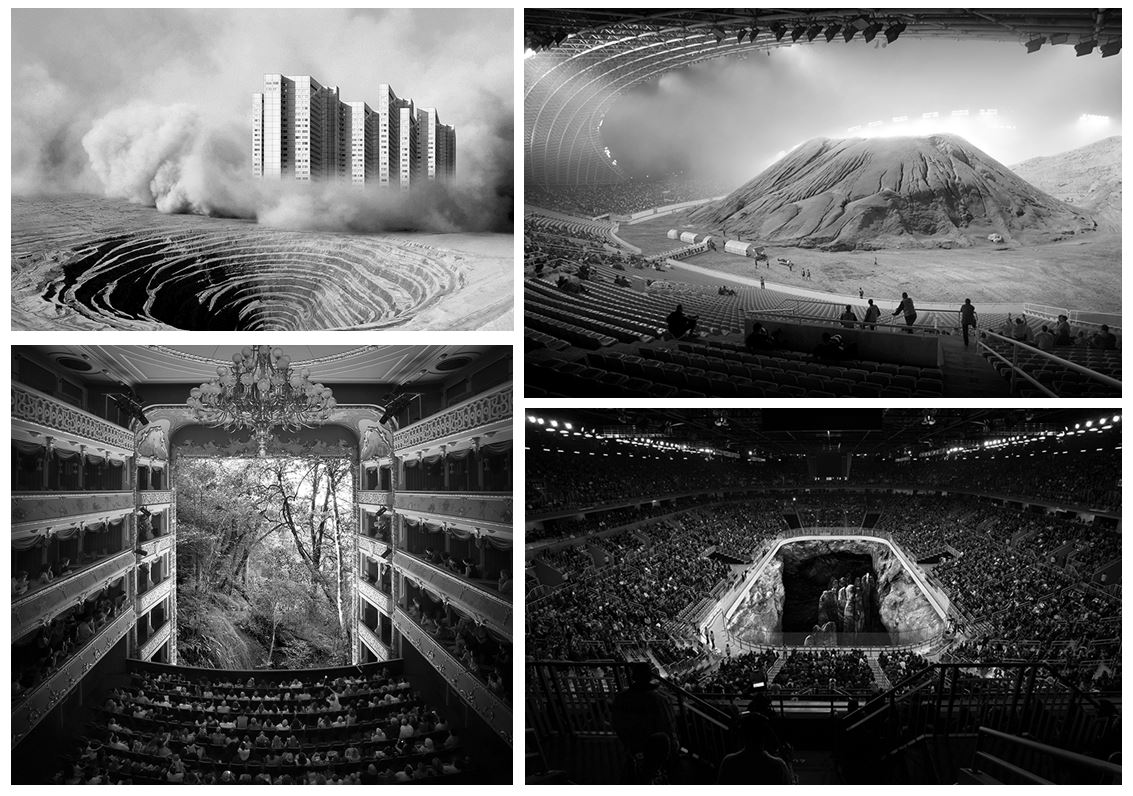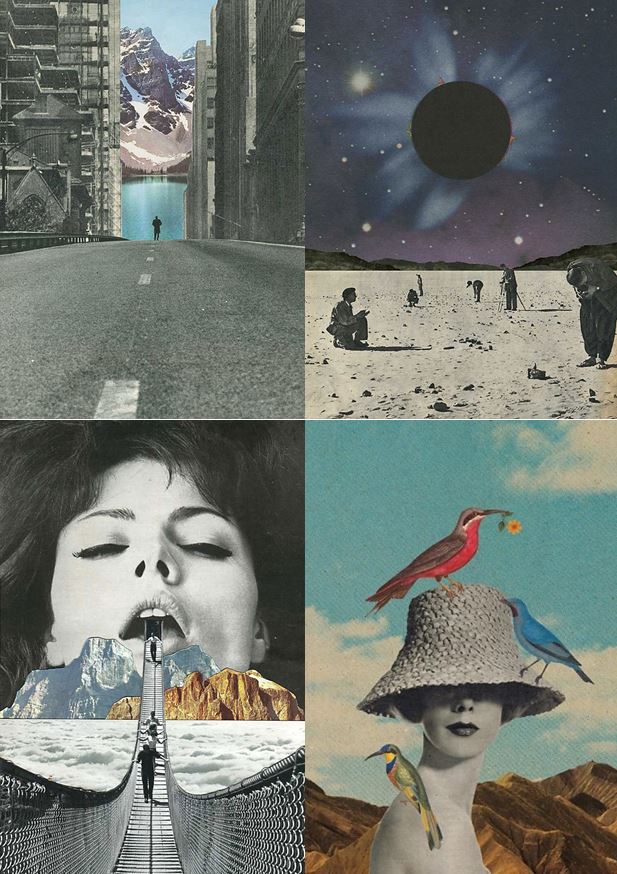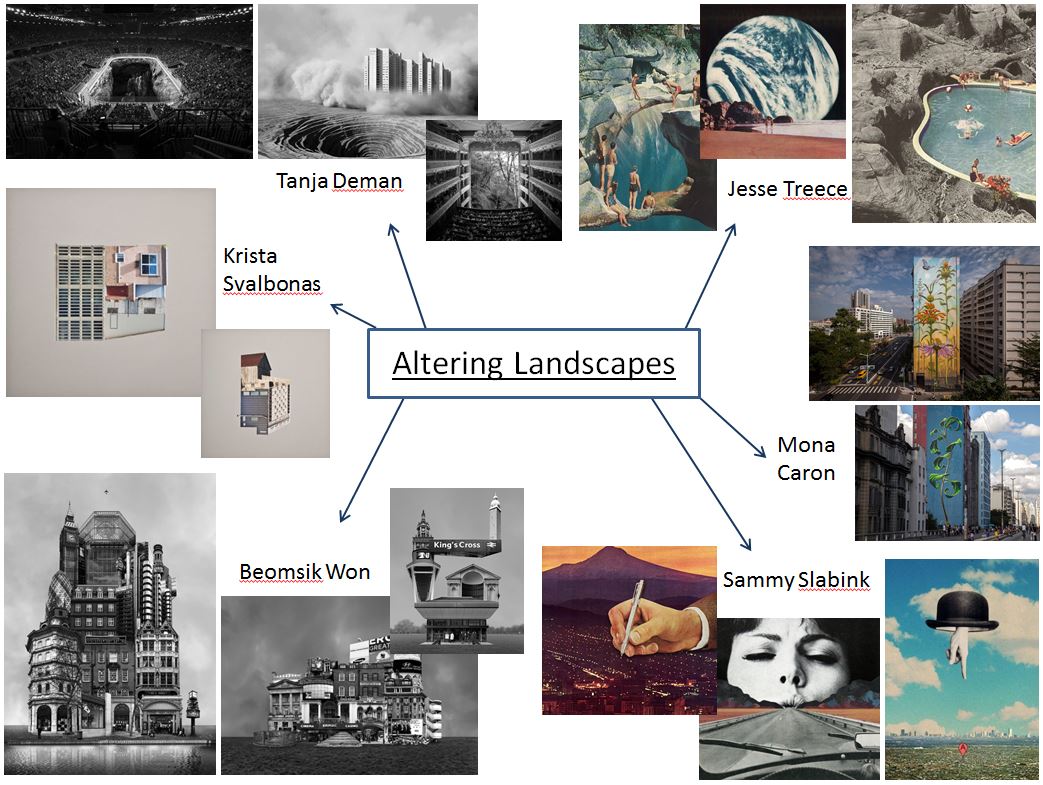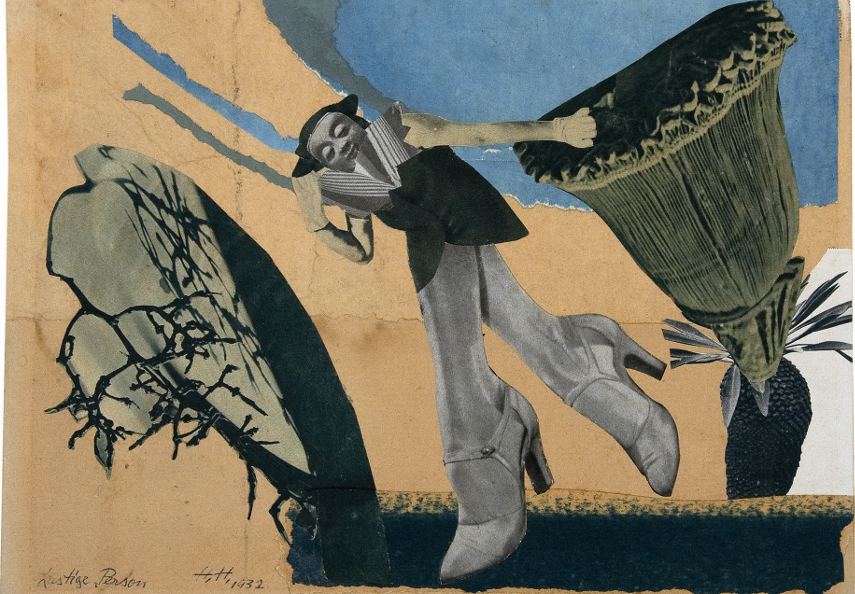Tanja Deman

Tanja Deman’s art is inspired by her interest in the perception of space and her relationship to nature.
Tanja’s works, incorporating photography, collage, video and public art, are evocative meditations on urban space and landscape. Observing recently built legacy or natural sites her work investigates the sociology of space and reflects dynamics hidden under the surface of both the built and natural environment.
Her investigation of collective psychology and space focuses on recently built legacy, specifically in spaces for collectives and how they relate to nature. Her images are visual metaphors that step into puzzling sites and situations layered with history. She captures the awkward socio-political dynamics under the surface of both the built and natural environment.

This image is part of her series called ‘Fernweh’ which explores the concept of a modernist city through its extreme relations to the landscape. The images are placed on a blurred line between a past which reminds us of a future and a future which looks like a past. Scenes are referring to the modernist ideas and aspiration of a man conquering the natural wild land and subordinating it to the rational order, and the consequences of those aspirations, which switched into the longing for an escape from urban environments.
Another one of her series called ‘Sight Densification’ is a photo collage series, based on conflict atmospheres of rapid territorial densification of contemporary megalopolis. While creating these images she was interested in the aura of coexistent city infrastructure, skyscrapers, building sights, bridges, dams and other mega structures in urban environments, as well as their dramatic relation to the nature.
She also won the Archisle International Photographer in Residence Award in Jersey 2017. In 2015 she began ‘Salt Water’ a new series exploring the underwater landscapes of the Adriatic Sea and in her Jersey project she develops this body of work further for the exhibition Sunken Gardens.
“In Jersey I have made a photographic exploration of inter-tidal zones, capturing morphological formations of the seabed, reefs and cliffs that penetrate the sea depths; the transmission and refraction of light through the sea water; and above all the lush underwater gardens of seaweeds.”
Jesse Treece


- His idea is to create artwork that excites and surprises no matter what the current trends or moods are.
- He’s mainly into old newspaper comic strips, dystopian sci-fi novels, crazy architectural drawings, designs from the 60’s and 70’s and works of artists like Salvador Dalí and Hayao Miyazaki.
- By this and his preference for the process and the look of handmade collages, he turns his inspiration into something unique and original.
- Being basically self-taught except for some not very serious art classes, Jesse Treece became a central figure in the underground collage art movement and was even recently included in AnOther Magazine’s list of the top ten collage artists in the world.
- He somehow manages to mix regular and absurd, beautiful and disturbing, science and nature, large and small and puts together these familiar imageries to create a whole new picture.
 Every image tells a different story that you can get lost in for hours. Jesse Treece himself even calls his work slightly disturbing. His imageries somehow made me think of science fiction and horror movies from the 70s.
Every image tells a different story that you can get lost in for hours. Jesse Treece himself even calls his work slightly disturbing. His imageries somehow made me think of science fiction and horror movies from the 70s.
“I came across a box of old magazine clippings one night and found myself wanting to make a visual story out of them. That turned into my first collage and it was the most satisfied I ever felt with something I had created. I guess it kind of snowballed into an obsession from there”
Sammy Slabbinck

- Belgian artist Sammy Slabbinck’s work comprises surreal collages and illustrations that somewhat unexpectedly combine vintage with contemporary images.
- Slabbinck likes to play around with different styles and proportions with the aim of creating powerful yet simple visual works that are permeated by a subtle sense of humour.
- His carefully composed images create startling juxtapositions and present new meanings through a masterful combination of completely heterogenous elements and a clever use of scale and form.
- He is an avid collector of magazines and books from the 50’s, 60’s and 70’s and takes full advantage of the muted tones and rich textures that he finds in his source material, namely vintage advertisements, photography and print.
He uses photography from vintage magazines, advertisements and prints as he says “they have a certain look and feel, with very strong lines. You can see it in the architecture, the cars, the furniture. But the photography is also completely different: it has a quality which he finds very innocent. The colours are faded and warm, the images have a soul. It’s nothing like the photographs you can take now with a super digital camera and millions of pixels. I tried making collages with recent magazines but they just don’t have the same spirit.”

”Mid-century advertisements have a certain look that appeals even up to this day. There is a sense of innocence in them that’s very inviting to work with. Putting these images out of their normal frame and juxtaposing them with modern elements can give an exciting and surprising effect. The characters in these ads can function as actors in the collage, and I, as the director, can give them a second life by putting them in a new surreal landscape.”
He doesn’t consider him self to be a political artist but he does like to put extra layers in his work. Sometimes it can go as far as a political satire. He does like to play around with the absurd and put some humor in his work.


 To add to my research of the area to be explored, I decided that it would be appropriate to take street view shots in order to have a bit of an insight before hand of the area.
To add to my research of the area to be explored, I decided that it would be appropriate to take street view shots in order to have a bit of an insight before hand of the area. Part of the main area I am exploring is the car park, however now has been transformed into the International Finance Centers, with much of it still under construction. Other areas include Liberty Wharf, which was once known as a former abattoir that was restored and converted for the use of a shopping centre.
Part of the main area I am exploring is the car park, however now has been transformed into the International Finance Centers, with much of it still under construction. Other areas include Liberty Wharf, which was once known as a former abattoir that was restored and converted for the use of a shopping centre. As seen above Henner very much focuses on satellite imagery as his main source of art. One technique commonly seen in his work is shaped pixels, this can be done through selecting an area and finding the main color present in that space, to then convert it to just that singular color.
As seen above Henner very much focuses on satellite imagery as his main source of art. One technique commonly seen in his work is shaped pixels, this can be done through selecting an area and finding the main color present in that space, to then convert it to just that singular color. They tend to focus on how the different textures of the floors can create the pattern to make aesthetically pleasing imagery. The images taken are of everyday generic objects that we take for granted and don’t see the patterns within them.
They tend to focus on how the different textures of the floors can create the pattern to make aesthetically pleasing imagery. The images taken are of everyday generic objects that we take for granted and don’t see the patterns within them. He is a vital part of the pop art movement which took place in the 60’s
He is a vital part of the pop art movement which took place in the 60’s When the Royal College of Art said it would not let him graduate in 1962, Hockney drew the sketch The Diploma in protest. He had refused to write an essay required for the final examination, saying he should be assessed solely on his artworks.
When the Royal College of Art said it would not let him graduate in 1962, Hockney drew the sketch The Diploma in protest. He had refused to write an essay required for the final examination, saying he should be assessed solely on his artworks.
